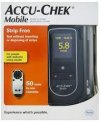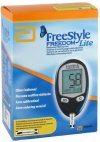Docb
Moderator
- Relationship to Diabetes
- Type 2
We have a lot of members, particularly those new to testing, asking about blood test results and what they mean or what is a "good" number. As many of you are aware I like numbers, mostly because they are what they are and do not have any opinion.
This morning, I woke up, got out of bed, did a finger prick and got a 4.3. Checked another finger and got a 4.2. Tried a third finger and got a 5.1. This led to me doing something I have wanted to do for a while and this was to take 10 consecutive tests on different fingers and both thumbs to see what the variation was. The next seven results were: 4.9,5.0,5.6,4.6,5.3,5.2,4.9.
These numbers leave me with a real conundrum. Do I panic over the 4.2 and start eating jelly babies to ward off a hypo or do I come on here crowing about the 5.2, a HOUSE SPECIAL or do I worry that the 5.6 is the start of a problem with high levels. Being me, I don't do any of those things, I put the numbers in a spreadsheet and do some calculations.
So I am happy to report that, this morning that my blood glucose was not 4.2 or 5.2 or 5.6, but that I do have a best estimate of my blood glucose which was 4.91+/- 0.88 (95% confidence interval). No jelly babies, no house special, no menu revisions, just another boring waking blood glucose of somewhere around 5.0 mmol/l.
What is the message from this? The main message for those who are new to testing is that you need to look at your numbers as a set, and base decisions on all the data, not just single readings. Even then, a difference of 2mmol/l from what you might expect could well be within the testing error. For old hands at testing, and all you T1's, yes I know, don't try and teach your grandmother to suck eggs.
I am not suggesting anybody does what I did as a matter of routine, I got the sore fingers so you do not have to. There is no doubt that blood glucose testing is a powerful tool when it comes to blood glucose management but like all tools it is important to understand its limitations.
This morning, I woke up, got out of bed, did a finger prick and got a 4.3. Checked another finger and got a 4.2. Tried a third finger and got a 5.1. This led to me doing something I have wanted to do for a while and this was to take 10 consecutive tests on different fingers and both thumbs to see what the variation was. The next seven results were: 4.9,5.0,5.6,4.6,5.3,5.2,4.9.
These numbers leave me with a real conundrum. Do I panic over the 4.2 and start eating jelly babies to ward off a hypo or do I come on here crowing about the 5.2, a HOUSE SPECIAL or do I worry that the 5.6 is the start of a problem with high levels. Being me, I don't do any of those things, I put the numbers in a spreadsheet and do some calculations.
So I am happy to report that, this morning that my blood glucose was not 4.2 or 5.2 or 5.6, but that I do have a best estimate of my blood glucose which was 4.91+/- 0.88 (95% confidence interval). No jelly babies, no house special, no menu revisions, just another boring waking blood glucose of somewhere around 5.0 mmol/l.
What is the message from this? The main message for those who are new to testing is that you need to look at your numbers as a set, and base decisions on all the data, not just single readings. Even then, a difference of 2mmol/l from what you might expect could well be within the testing error. For old hands at testing, and all you T1's, yes I know, don't try and teach your grandmother to suck eggs.
I am not suggesting anybody does what I did as a matter of routine, I got the sore fingers so you do not have to. There is no doubt that blood glucose testing is a powerful tool when it comes to blood glucose management but like all tools it is important to understand its limitations.


